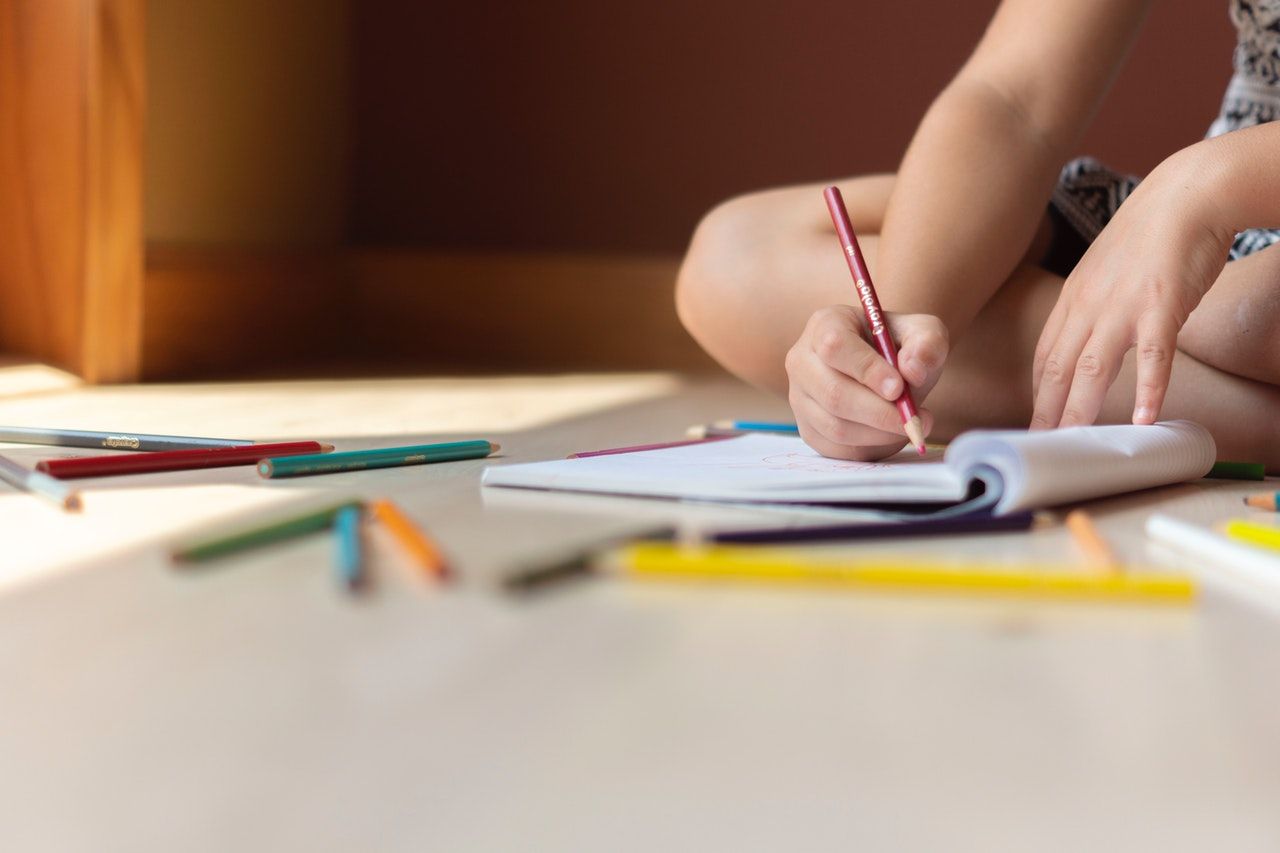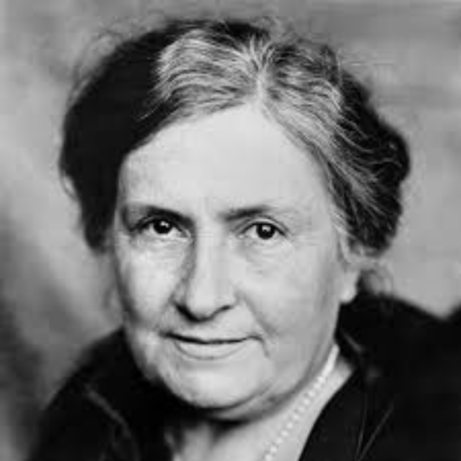Developing Graphomotor Skills

The physical act of writing – using pens and paper to create marks that relay words, concepts and messages – is a uniquely human and tremendously complex activity. Increasingly, it is also one that modern children struggle with. Can Montessori help?
Writing ability is something that most adults take for granted: how often do we stop to consider the minute interplay of cognitive skills, visual-spatial processing and incredibly fine movement that goes into us writing down a phone number or a grocery list?
However, more and more often parents are forced to do just that as they face their child’s surprising inability to learn writing at the time and level expected of at school. There seems to be an emerging epidemic of young elementary students exhibiting symptoms of dysgraphia and apraxia: otherwise healthy, intelligent children (most often boys) who for some reason struggle with this specific task. You will find people blaming anything and everything, from diet to video games, without any clear resolution; in Montessori, of course, we have a few ideas of our own.
Dr. Montessori taught us that children come equipped with enormous potentials for any kind of human activity; that they are born ready to observe, participate and incarnate every aspect of their environment on their way of becoming a person of their time and age. It is hardly possible that today’s children have somehow lost the potential for writing, but very likely indeed that environmental changes – diminished opportunities for activity and practice that children encounter – are leading to these issues. To understand what we must offer, let’s take a look at what writing requires.

Explore the fundamentals of Montessori parenting with this free video by Sylvia Arotin, offering insights and strategies to empower and educate your child.
The Mechanics of Writing
If we were to break the skills necessary for writing down into individual components – as Dr. Montessori was so fond of doing in every area of education – we can identify three major areas:
- Fine motor skills of both planning and execution (including correct pencil grip and all of the minute movements necessary to shape letters)
- Visual and perceptual skills necessary to see, distinguish, interpret and remember the shapes of individual letters
- Ability to process the visual and kinesthetic feedback of writing (knowing where our hands are in space even when we are not looking at them, as well as matching out movements to what we see – for example when seeing our writing is veering off the line)
All three groups fall within the psycho-sensory-motor umbrella of developmental activities that we actively pursue and support from birth through the Montessori curriculum. Sometimes, you will encounter the term “pre-writing skills” which is not incorrect so much as it is incomplete – these skills serve the future development of writing, as well as so much more. As Dr. Montessori famously wrote, “hands are the instruments of man’s intelligence”, after all. The key point here is from birth – we cannot begin to concern ourselves with these abilities when the child is about to start writing, as at that point they need to lean on years of prior experience and practice as a foundation.
(We also separate the physical process of writing from the child’s study of letters and their shapes, and the gradually developing ability to read. This is why we use elaborate materials such as the movable alphabets, which allow children to learn and use letters to create words and sentences without the effort of graphomotor production; in a similar way, traditional education sometimes offers children with writing challenges electronic aids and keyboards)
The good news, however, is that as parents (or educators), you can easily give this kind of support outside of a classroom of any kind, Montessori or otherwise.
Supporting Graphomotor Skills from the Beginning
How does a child learn? One way and one way only, of course: by doing. What we must offer then are opportunities.
From the very beginning of life, children need interesting things to look at! Even as tiny newborns begin to learn to focus and track objects with their eyes, they are building foundations of future visual capacities. We can give art, mobiles, toys, but also interesting sights and scenes in nature or among other people, and of course – picture books.
To infants, offer a multitude of toys that can be pushed, poked, pulled and gripped; with different textures, weights, sizes (within a safe spectrum, of course). Scraps of cloth, metal utensils, shaped pieces of wood – any and all options to offer a rich variety that the child can experience and learn from.
The possibilities explode with older babies and toddlers. Practical Life is paramount, naturally, with its countless invitations to twist, squeeze, wipe, press, wring, stir, and a hundred other actions of the hand. Otherwise sensory motor materials (or, as most parents usually call them, toys) should focus on various grips, stacking, matching and fitting – shape sorters and inset puzzles are very popular at this age and directly promote visual discrimination, shape matching and learning. Sensory play is also of key importance – whether with slime, playdough, water, mud, sand, foam, it should be exploratory, joyous and child-led.
At this age is when artistic production first emerges in scribbling, something we should embrace, promote and celebrate. However, it is very important to not give a young toddler adult writing implements: their small hand is not ready for the correct, ergonomic finger grip. Instead they might develop a habitual poor pencil grip (something that in later years often leads to poor control of the pen, fatigue, wrist tension, cramping and pain, and resulting graphomotor problems). Instead, use thick, short pencils, triangular or tear-drop shaped “baby crayons”, thick brushes and other similar tools.
For hand-eye coordination, posting (inserting), threading, sewing, lacing and stringing activities offer a wealth of benefits (as well as hours and hours of concentrated work and enjoyment) to the child.
In the preschool years, children naturally become interested in refining their abilities and pushing the limits of their skills. Aside from further extending Practical Life options and offering more complex mazes or puzzles, we should further focus on “fiddly” manipulative work – mosaics, tiny beads to string, perler art. Use of tools is particularly welcome, with scoopers, spoons, tongs, chopsticks, household tools and many more. As the preschool child begins to consciously explore their senses, they find it an intriguing challenge to play with limits: working blindfolded, or with their non-dominant hand. This is a fantastic opportunity to focus on the kinesthetic and stereognostic sense: playing games such as asking the child to identify objects by touch alone, tracing and replicating shapes without seeing, and more.
Free art activities (without prescribed process and product) continue to be vitally necessary. The child should first and foremost feel pleasure and satisfaction from their drawing – as well as, later, writing. And finally, each child continues to need free sensory play, especially in nature: building sandcastles, collecting little rocks or digging moats in mud.
Around age four or five, children are usually able to use an adult-sized pencil. Still, it is critically important to model and support the development of correct pencil grip. Most children will benefit from ergonomically shaped pencils that guide fingers into the proper alignment, or from using triangle grips.
What Not to Give: Technology
One thing that you’ll probably never see a Montessorian advocate for is the use of so-called educational electronics and technologies in early childhood, especially in the first six years of life. We are very aware that there are countless applications and games available on any number of “smart devices”, designed to teach anything and everything, from letters to mathematics. Over the past decades, however, it has become an unofficial mission in many Montessori circles to protect children from those.
Whilst all of this software promises to deliver rich stimulation to the child’s mind, it aims to do so only through the eyes (at maximum through pushing a few buttons or swiping on a screen). “Never give more to the mind than you give to the hand,” wrote Dr. Montessori, and little did she know a century ago what sophisticated methods we would devise to circumvent the hands altogether. There is little or no evidence, in fact, that these electronics do anything at all besides stealing our children’s attention and time – holding them in the trap “screen hypnosis” at an age when the child is uniquely ready to learn and develop through natural stimuli, when literally any activity would be more beneficial to the growing body and mind.
Montessori Beginnings
YOUR ULTIMATE
MONTESSORI PARENTING COURSE
FOR ZERO TO THREE
Gain clarity and confidence in your parenting to raise a resilient, independent and joyful child.


